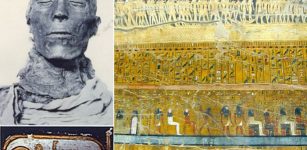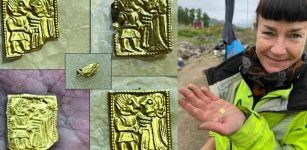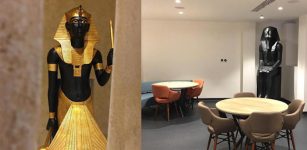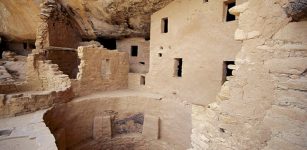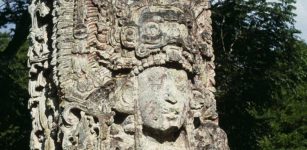Connection Between Alpha Draconis And Egyptians Pyramids Revealed
Conny Waters – MessageToEagle.com – Alpha Draconis, also known as Thuban, is located about 270 light-years away in the northern constellation Draco.
Despite its “alpha” designation, it shines as Draco’s fourth-brightest star. Thuban’s fame arises from a historical role it played some 4,700 years ago, back when the earliest pyramids were being built in Egypt.
Can new astronomical observations shed light on what motivated builders of the Egyptian pyramids?
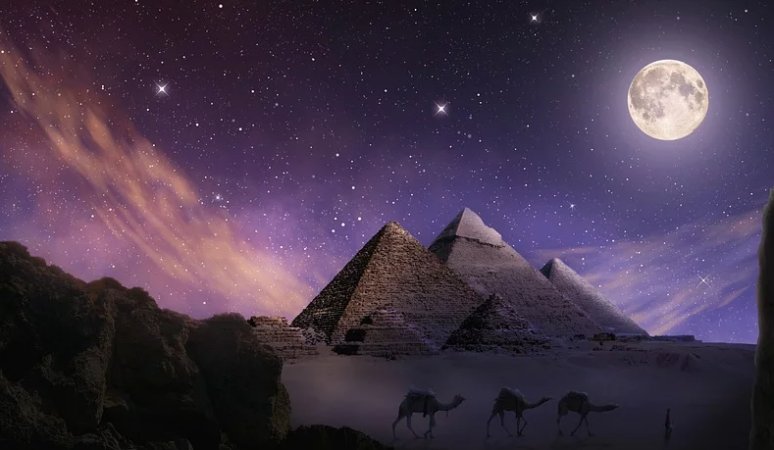
Did studies of eclipses help Egyptians to build their pyramids? Credit: Public Domain
Astronomers using data from NASA’s Transiting Exoplanet Survey Satellite (TESS) were surprised when they discovered that the bright star Alpha Draconis and its fainter, previously known companion actually undergo mutual eclipses.
Students of Egyptology already know ancient Egyptians were skilled astronomers who regularly watched skies and tracked various heavenly objects.
Previous research has revealed that ancient Egyptian papyrus Cairo 86637 calendar is the oldest preserved historical document of naked eye observations of a variable star, the eclipsing binary Algol – a manifestation of Horus, a god and a king.
It has been confirmed that ancient Egyptians knew about ‘Demon Star’ Algol’s variability 3,000 years before Western astronomers.
Astronomers suggest now it’s possible the first eclipse of ancient North Star played a key role in building Egypt pyramids.
About 4,700 years ago the star Thuban may have served as the North Star. It appeared as the one closest to the northern pole of Earth’s spin axis, the point around which all of the other stars appear to turn in their nightly motion.
Today, this role is played by Polaris, a brighter star in the constellation Ursa Minor. The change happened because Earth’s spin axis performs a cyclic 26,000-year wobble, called precession, that slowly alters the sky position of the rotational pole.
See also:
Seshat: Goddess Of Astronomy Aligned Sacred Monuments To The Stars Long Before Imhotep
World’s Oldest Recorded Solar Eclipse Re-Writes History Of Egyptian Pharaohs
Tomb Of Senenmut And Earliest Known Star Map In Ancient Egypt
The North Star or Thuban is actually a pair of stars and the larger star among the pair is more than four times bigger and hotter than the Sun. The surface temperature of the larger star is around 17,500 degrees Fahrenheit. Its companion, which is five times fainter, is most likely half the primary’s size and 40% hotter than the Sun. Previous studies suggested that Thuban displayed small brightness changes that cycled over about an hour, suggesting the possibility that the system’s brightest star was pulsating.
“The eclipses are brief, lasting only six hours, so ground-based observations can easily miss them. And because the star is so bright, it would have quickly saturated detectors on NASA’s Kepler observatory, which would also mask the eclipses,” Angela Kochoska, a postdoctoral researcher at Villanova University in Pennsylvania said.

The star Alpha Draconis (circled), also known as Thuban, has long been known to be a binary system. Now data from NASA’s TESS show its two stars undergo mutual eclipses. Credit: NASA/MIT/TESS
Many scientists think ancient Egyptians relied on the bright stars Big Dipper and Little Dipper to align their pyramids in a north-south direction with an accuracy of up to 0.05 degrees. However, it’s still debated how the pyramid builders took accurate measures for the alignment. Since the tilt of Earth’s axis has changed over time, so have the positions of the stars.
Using sophisticated astronomical software, scientists have been able to rewind the astronomical clock and study the sky at the time the pyramids were constructed. These studies showed that the two stars rotated around the pole opposite each other in the Old Kingdom sky and an imaginary line joined these stars, passed through the north pole.
This means that when both the stars placed vertically above each other, they both mark the position of true north for the pyramid builders. In this case, if the calculation is right then the construction of the Great Pyramid at Giza began between 2485 and 2475 BC.
Kochoska, who presented the findings at the 235th meeting of the American Astronomical Society in Honolulu on Jan. 6, said she is planning a follow-up study to look into additional eclipses that TESS can see.
“Discovering eclipses in a well-known, bright, historically important star highlights how TESS impacts the broader astronomical community,” said Padi Boyd, the TESS project scientist at NASA’s Goddard Space Flight Center in the statement. “In this case, the high precision, uninterrupted TESS data can be used to help constrain fundamental stellar parameters at a level we’ve never before achieved.”
Written by Conny Waters – MessageToEagle.com – AncientPages.com Staff Writer

